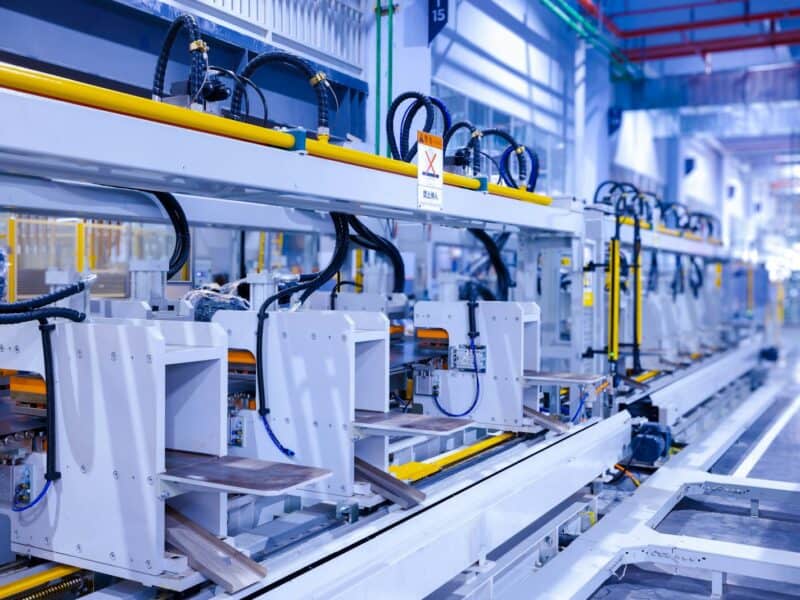In the dynamic landscape of urban development, the process of demolition takes on a new level of complexity when carried out in densely populated city centres. The challenges that demolition crews face are as diverse as the cities themselves, ranging from logistical intricacies to environmental concerns. In this article, we delve into the intricacies of demolition in urban environments, shedding light on the strategies and innovative demolition tools employed to ensure the success of such projects.
The Urban Jungle and Demolition Challenges
Urban environments, characterized by towering skyscrapers, historic landmarks, and a maze of interconnected infrastructure, present a unique set of challenges for demolition experts. When compared to demolitions in more rural or suburban areas, the stakes are higher, and precision is paramount.
Tool Hire Services: The Urban Demolition Arsenal
In cities like Wolverhampton, where urban development is on the rise, the demand for specialized demolition equipment has never been greater. Tool hire services provide a lifeline to demolition crews, offering access to an array of cutting-edge machinery that is tailored to the intricacies of urban demolitions.
Whether it’s the controlled precision of concrete crushers, the versatile reach of telescopic handlers, or the safety and efficiency of dust control systems, tool hire services in Wolverhampton provide the essential equipment necessary for navigating the challenges of urban demolitions. These services empower demolition experts with the tools they need to operate effectively and safely in tight and crowded spaces.
Retractable Barriers: Safeguarding the Urban Worksite
Urban demolition projects often require meticulous planning and the implementation of safety measures to protect both workers and the public. This is where retractable safety barriers come into play. In cities across the UK, retractable barriers are deployed strategically to manage access and maintain safety in and around demolition sites.
These barriers serve as a visible and effective means of cordoning off hazardous areas, directing pedestrian and vehicular traffic, and ensuring that safety protocols are adhered to. In densely populated urban environments, the use of retractable barriers becomes crucial for minimizing the risk of accidents and collisions between pedestrians, vehicles, and construction equipment.
Logistical Complexities in Urban Demolition
One of the primary challenges in urban demolition is the limited space available for equipment and debris removal. Unlike rural areas where there may be ample space for debris disposal, city centres often have restricted access and minimal space for waste removal. Tool hire services are instrumental in providing compact yet powerful machinery that can navigate tight urban spaces with ease.
Mini excavators and skid steer loaders, available through tool hire services, are essential for manoeuvring within confined areas, efficiently dismantling structures, and loading debris onto trucks for removal. These versatile machines are ideal for urban demolition projects, where precision and agility are paramount.
Environmental Considerations and Dust Control
In urban environments, there is a heightened awareness of environmental impact and air quality. Demolition activities can generate dust and pollutants that pose risks to both workers and the surrounding community. This necessitates the implementation of advanced dust control measures, which are readily available through tool hire services.
Dust suppression systems, such as misting cannons and dust collectors, are essential tools for minimizing the dispersion of harmful particulates during demolition. These systems not only enhance the safety of the worksite but also demonstrate a commitment to environmental responsibility, aligning with the growing trend of sustainability in urban construction and demolition projects.
Safety at the Forefront
The safety of workers, bystanders, and the integrity of nearby structures are paramount concerns in urban demolitions. Retractable barriers play a vital role in delineating safe zones, ensuring that unauthorized personnel are kept at a safe distance, and mitigating the risk of accidents. These barriers can be easily adjusted to accommodate changing work conditions and evolving safety requirements.
Moreover, safety training and the use of personal protective equipment (PPE) are non-negotiable aspects of urban demolition projects. Crews working in city centres must undergo rigorous safety training to navigate the unique challenges posed by densely populated areas. Tool hire services often include the provision of safety equipment as part of their offerings, ensuring that workers are adequately protected.
Collaboration and Communication
Effective communication and collaboration between demolition teams, local authorities, and the community are crucial in urban demolitions. Before the demolition process begins, obtaining the necessary permits and approvals from local authorities is essential. Additionally, keeping residents and businesses informed about the project’s timeline and potential disruptions helps maintain a positive relationship with the community.
Retractable barriers can be employed to create temporary information kiosks or notice boards at the perimeter of the demolition site. These serve as a means of communication with the public, providing updates and contact information, fostering transparency, and addressing concerns.
Conclusion: Triumph in the Urban Demolition Arena
Demolishing structures in urban environments is a complex ballet of precision, safety, and environmental responsibility. Thanks to the availability of advanced demolition equipment through tool hire services and the strategic deployment of retractable barriers, demolition crews can navigate the unique challenges of city centres with confidence.
The ability to access specialized machinery and safety measures ensures that urban demolition projects can be executed efficiently and responsibly. As cities continue to evolve and grow, the role of tool hire services and safety measures, including retractable barriers, in the demolition process will remain pivotal, contributing to safer, more controlled, and more sustainable urban development.



